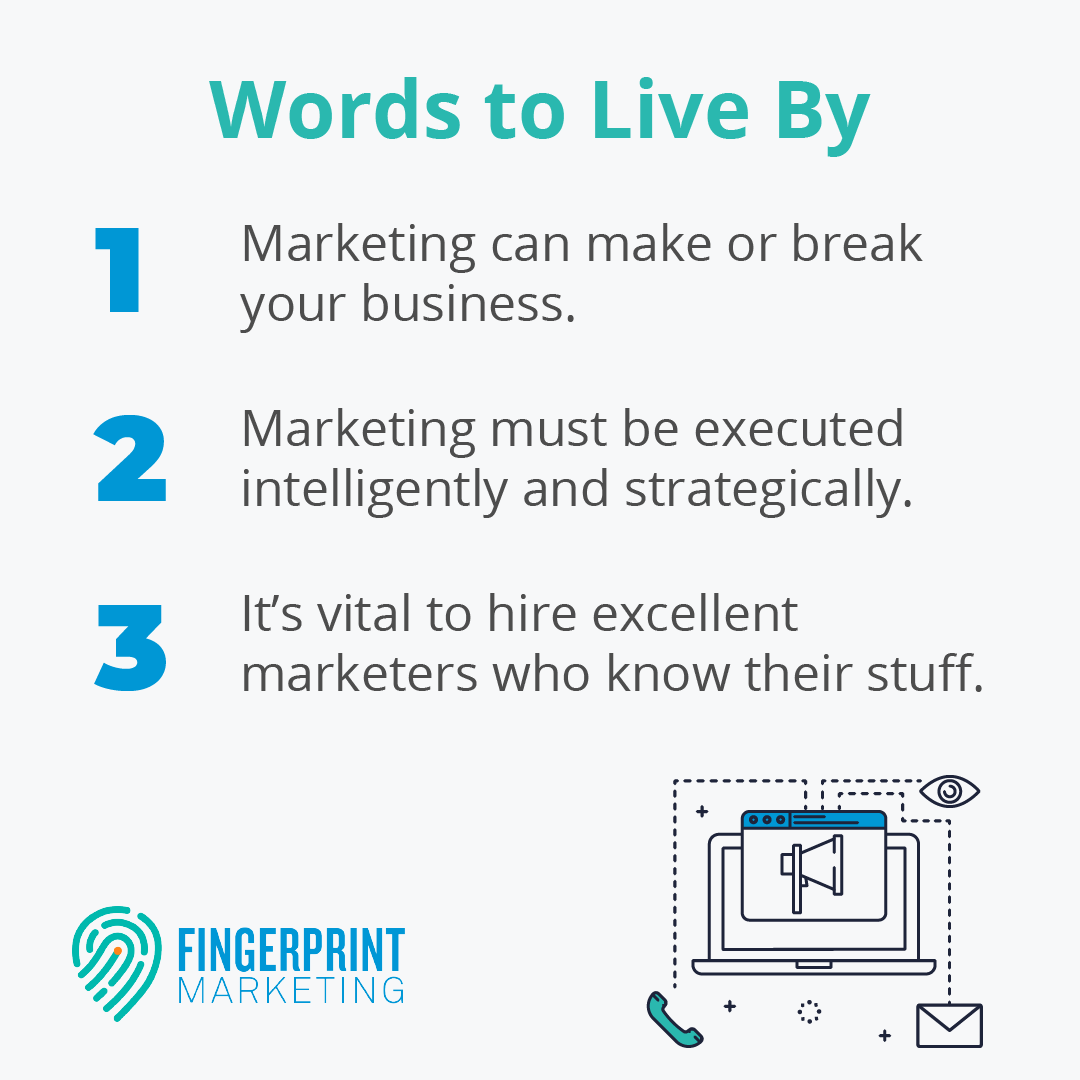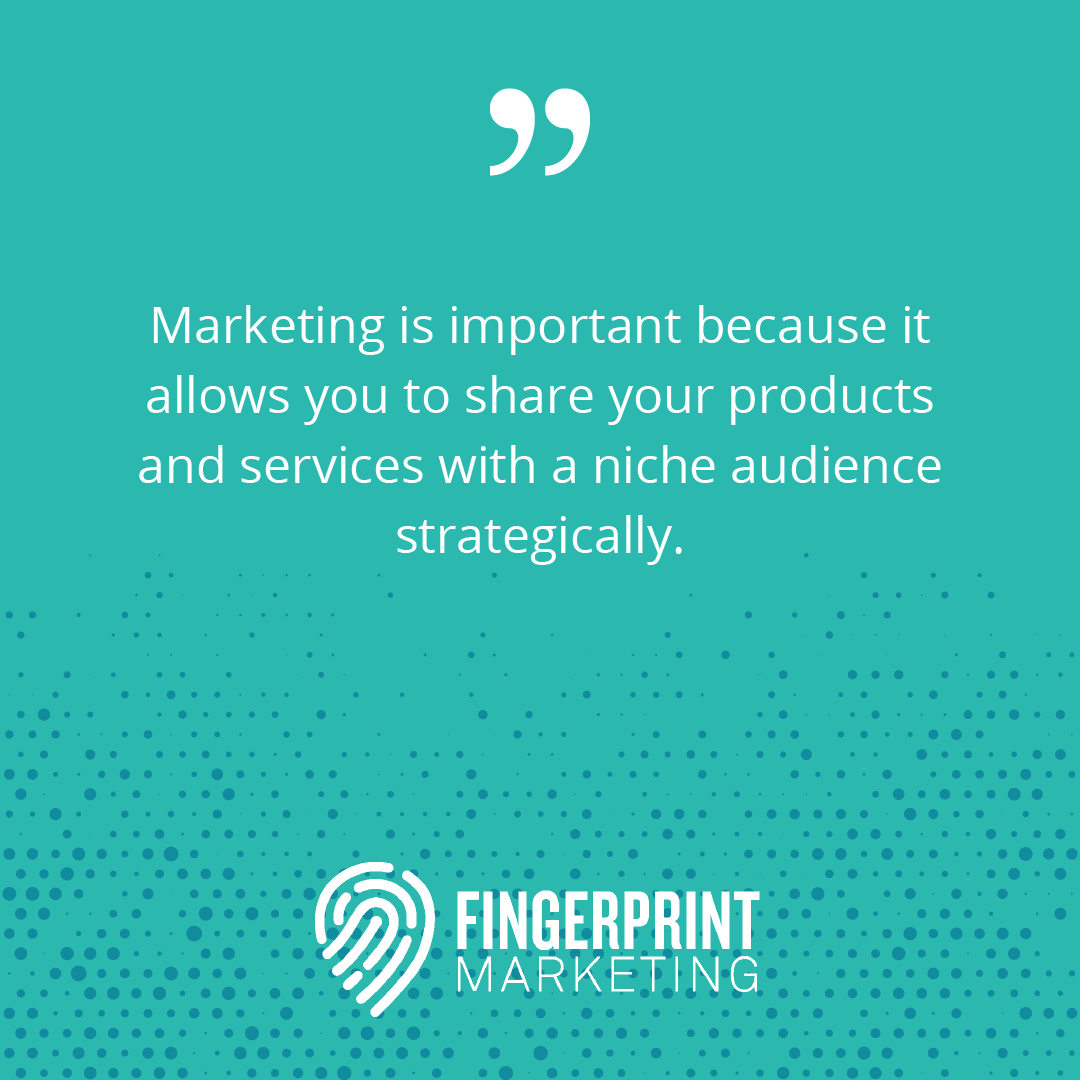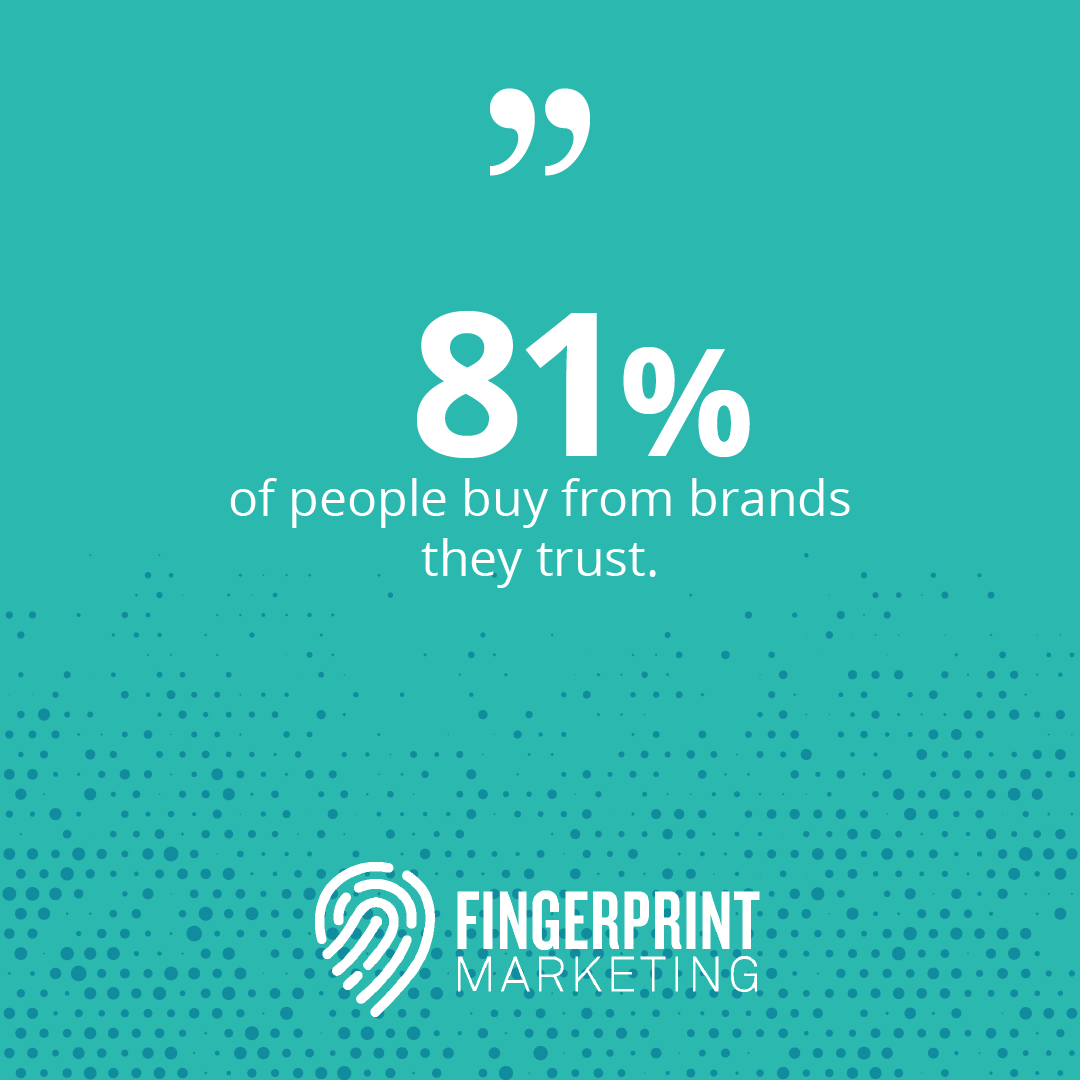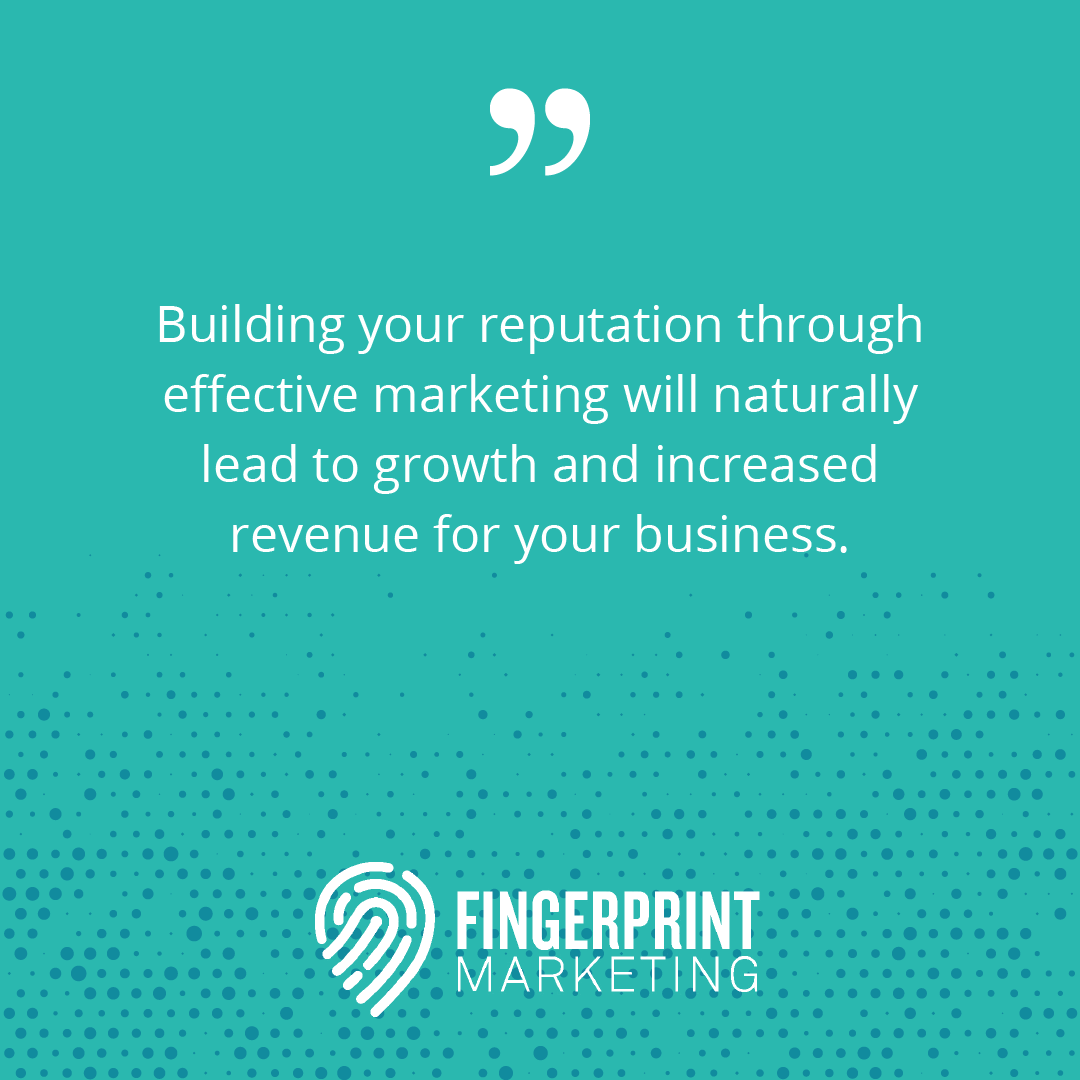Did you know 99.99% of businesses in the U.S. are small businesses? How cool is that? And nearly 70% of marketers are actively investing in content marketing. We’re going to make a big, bold claim to start this shindig: marketing has the power to make or break your business.
You don’t just need marketing, however. To run a successful small or local business in this crazy, modern era, you need to execute your marketing strategically and intelligently.
In other words, your marketing minions (‘scuse me, employees) need to know what the heck they’re doing. And they must do what they do with excellence. No more faking-it-till-you’re-making-it fluff. That’s a surefire way to fall flat on your face and waste a whole lot of money.
In this guide, we’re going to cover – in-depth – why marketing is important. Then we’ll go ahead and answer several other questions you’ve probably asked at some point in your business life – all in one neat little package. You’re welcome in advance.
What Is Marketing?
In simple terms, marketing is the strategies and objectives you use to promote your business. In today’s world, marketing primarily exists in the digital realm. For example, banner ads, email campaigns, and SEO-optimized blogs.
However, there are still strong and viable traditional marketing options like TV commercials, direct mail, and local sponsorships.
In essence, marketing is whatever techniques a business uses to communicate with customers and promote its products and services.
Why is Marketing Important for Small Business?
Marketing is important because it allows you to share your products and services with a niche audience strategically. It helps you tell, show, and PROVE to people how terrific your business is and how you can help them. You can also educate people on topics related to your business, including how to solve common problems and which solutions are best.
Here are five specific reasons why marketing is essential for your small business in the 2020s.
1. It builds brand awareness
The primary purpose of marketing is to get the word out about your business: who you are and what products or services you offer. However, before you try attracting customers, you have to define your brand and its image.
This includes things like:
- Logo
- Branding color palette
- Packaging
- Slogan
- Style (casual, professional, funny, etc.)
Once you establish how your business will present itself, you need to keep your branding consistent. The more potential customers see your branding, the more aware they will be of your company and your products. From there, you can start building your reputation. Will customers see you are reliable? Relatable? Customer-oriented?
By building your brand awareness, you help people understand your business in-depth. Not only does this bring in new customers, but it keeps your loyal customer base happy, so they tell their friends and keep coming back for more.
2. It helps you get to know your target audience.
As you develop your marketing strategy, you will get to know your customers better and what their expectations are for your brand. One of the best ways to do this is through engagement marketing, which is typically online or in-person interactions. This could include social media, a blog, or hosting special events in your local community.
The communication you have with your audience will help you better define who your target audience is. Perhaps you initially thought men and women in their 30s would enjoy your products, but after interacting with customers, you realize your audience is closer to 50 years old. When you learn details like this, you can refine your marketing strategy to better engage with the people who are most likely to purchase your products and services.
Get to a place where you deeply understand their desires, needs, and problems. Figure out how you can reach them where they are and connect with them in meaningful ways. This can help you build a long-lasting relationship that results in customer loyalty. Companies who deliver a personalized experience can convince 76% of consumers to purchase from them.
Knowing your target audience well will help you improve all of your marketing efforts so you can avoid wasting your budget by getting in front of the wrong dang people (those who don’t care a little about you).
This also opens the door to personalized marketing techniques, such as customized messages, promoting similar products based on what they already purchased, and targeting customers based on their location.
3. It helps your target audience get to know you.
Modern customers want to feel connected and relate to the brands they interact with and purchase from. This means you need to let your customers get to know your company and what it stands for.
Share your brand story with potential customers. Make it personal. Let them get to know who you are, why your business started in the first place, and what you believe. Making your business relatable will enable people to connect emotionally with your story.
People want to support businesses they believe in. So be authentic by sharing your personal, relatable story creatively. And you’ll soon build a lovely following of loyal supporters and evangelists.
When your customers feel connected to your brand, they are more likely to become repeat, loyal customers, which is critical for any small business that wants to succeed.
4. It helps build trust with your customers
Building trust with consumers, just like any relationship, takes time and effort. You need to prove that your small business is credible, ethical, moral, genuine, and socially responsible. After all, 46% of consumers will pay more to purchase from a brand they trust.
You don’t earn the “trustworthy” status on a whim. You have to be intentional when forming your marketing messages and communicating with people.
Consider implementing social responsibility practices, like ensuring your products are ethically sourced. Or adopt a noble social cause, such as giving a percentage of your revenue to charity. People will love you for it and choose to buy from you over competitors.
However, make sure your intentions are genuine. If you take advantage of a social situation just to earn clout, but then quickly forget it once the trend has passed, your customers will see it as a stunt and will not hesitate to abandon you. Because of this, only invest in causes that resonate with and reflect your brand. For example, if you sell pet products, it would be natural to support local animal shelters with a portion of your profits.
Another way to build trust is through superior customer service. While not a small business, Amazon built its empire on a strong foundation of customer service. It earned this reputation with a generous return policy and by prioritizing customer satisfaction.
For small businesses, having stellar customer service is critical. A few unhappy customers can deal a lot of damage with negative reviews online.
By establishing your brand image as genuine, responsible, and customer-friendly, your customers should keep coming back for more.
5. It helps you grow your business.
When you build a solid marketing foundation, you will gradually see your brand recognition grow and your customers coming back to you time and time again thanks to their trust in you and your brand.
Building your reputation through effective marketing will naturally lead to growth and increased revenue for your business. If your offerings are as good as you describe them, you’ll build a loyal customer base who will spread the word for you! Did you know that new customers discover 85% of small businesses through word-of-mouth marketing? It’s basically the best.
What Are the Different Types of Marketing Strategies for Small Businesses?
Marketing includes a broad range of strategies and activities you can use to grow your business. Here are some of the most common types of marketing:
Social Media Marketing
Social media platforms are a powerful marketing tool because they’re highly targetable. You can hand-pick your audience by demographics or geographic location to ensure you’re delivering the right message to the right people. Social media is also an effective way to increase customer engagement. Through comments, shares, likes, and chat threads, you can initiate a dialog among your audience that connects people with your brand and adds a level of personalization that other channels don’t provide.
Each social media platform appeals to different demographics. We usually recommend choosing a couple to focus on to avoid spreading yourself too thin. Just be sure to pick the appropriate platforms for your target audience and niche.
- Facebook: the largest platform by far, suitable for advertising, lead generation, and building relationships (primarily targets individuals ages 25 to 54)
- Instagram: the go-to platform for influencer marketing, building brand awareness, developing relationships, and selling unique products and services (targets individuals ages 18 to 49)
- X (formerly known as Twitter): a fast-paced platform where you can engage with individuals looking for breaking news, announcements, and easily digestible content (targets individuals under 50)
- LinkedIn: for B2B companies looking to generate leads, share editorial content, and build authority in a specific industry (targets individuals ages 30 to 49)
- Pinterest: a highly visual, graphics-heavy platform ideal for driving sales (targets women)
- TikTok: a fun, bold, video-driven platform for posting short comedy, dance, and talent videos (targets teens and young adults)
- YouTube: for publishing short- and long-form entertainment, instructional videos, documentaries, and more, the second most-visited platform after Google (primarily targets teens and young adults but attracts viewers of all age groups)
Content Marketing
Content marketing is a strategy that focuses on creating content and distributing it in a way that reaches a specific audience. The goal, ultimately, is to get people to convert into customers by making a purchase. But to get there, you often need to build trust over time by offering various types of content. Some of the most common channels for content marketing include:
- Blogs
- Videos
- Email campaigns
- Social media posts
- Podcasts
- Webinars
- Ebooks
Content marketing is a long-term strategy. Once you gain your target audience’s allegiance, you’ll gain loyal customers and advocates for your brand.
The Content Marketing Institute found that 88% of content marketers have reached their goals by effectively building trust with their target audience. That’s why 62% of B2B marketers have developed a highly successful content marketing strategy.
A subset of content marketing is SEO marketing. This stands for search engine optimization. When a potential customer searches for something online that relates to your business, you want them to find your content. This is achieved through the strategic use of keywords and the creation of helpful content that meets the intent of the searcher.
Print Marketing
While much of the world is digital, there is still room for traditional print marketing. Handing out colorfully printed flyers on nice cardstock at a community event may catch someone’s attention more than an online banner ad that is scrolled past in less than a second.
In fact, this has been proven by science. In a 2014 study, researchers found that humans remembered 3D objects better than 2D objects. This means when you hand a customer a printed object, they are more likely to remember your brand than if they just saw a digital ad.
Print marketing gives your customers a tactile way to interact with your brand — they can feel the paper, see the colors, and even smell the ink. Your choice of images, words, colors, and even the paper itself will convey a lot of information about your business.
If you’re not sure what your business could do for a print marketing campaign, here are some suggestions:
- Direct mail
- Promotional flyers and posters for events
- Sign in your window with QR codes
- Printed materials for trade shows, local events, or conferences
- Marketing boxes for job prospects at job fairs
With more of a sensory experience than a digital ad offers, adding some print marketing could be a good choice to enhance your marketing strategy.
Email Marketing
An email campaign is a great way to connect with customers beyond their customer journey. You can remarket to them with products like the ones you know they like. Send incentives and specials to encourage first-time shoppers to convert and loyal customers to return. You can create highly tailored content that addresses specific problems or topics. Emails allow you to deliver more in-depth information about your company and your offerings allow shoppers to make more informed decisions.
Digital Marketing
Digital marketing involves promoting your business, educating people, and selling products and services online to a target audience. You can do this effectively through various channels.
- Business website: Your company website is an important part of your marketing plan. Design and layout help build brand identity and awareness. Consistent use of brand colors, tone of voice, and company logo lets your audience get to know your company and recognize your content when they see it. Organized, well-labeled pages help current customers and new visitors easily and quickly find the information they’re looking for. More than a place to share information about your business and your product design, your website is a tool to channel people through the sales funnel.
- Search engines: Ninety-three percent of online experiences begin with a search engine. That’s why search engine optimization (SEO) is key to increasing visibility and driving more traffic to your website. Through high-performing keyword placement and custom content that resonates, you can earn higher search engine ranking placement. This is important because 75% of online users don’t scroll past Google’s first page of results. To stand out from the crowd and attract more attention, you need to include search engines in your marketing strategy.
- Videos: Video content is entertaining, engaging, and informative. It’s also an effective way to use images and action to connect with your audience on a more emotional level, helping you to build deeper relationships that generate more revenue. In today’s online marketplace, video content is especially important because it helps shoppers, who can’t see and experience products in person, gain a better understanding of a product’s features and function. From demonstrations to tutorials, videos help viewers connect with your brand and build customer interest and loyalty.
Understanding Your Audience
Understanding your audience is one of the most important parts of a successful marketing strategy. If you don’t know who your audience is, how can you sell to them?
If you’re struggling to identify your audience, look closely at who is already purchasing your products. You can use surveys to gather demographic information, such as age, what their interests are, and why they chose your product. These could be simple, informal social media surveys to help you get started.
Once you know who your audience is, where they’re coming from, and what they respond best to, you should see much better returns from your marketing efforts.
How to Build a Small Business Marketing Plan
To build your small business marketing plan and maximize your efforts, you should:
- Know your audience: conduct audience research to understand who needs your products and how you can best reach them.
- Set goals: decide what you want to accomplish with your marketing plan and identify steps to get you there.
- Determine channels: audience research will tell you how people want to receive information so you’re sure to reach them where they spend their time online.
- Create relevant content: write with your audience in mind, creating custom content that addresses specific concerns and delivers value and meaning.
- Track metrics: once you’ve set your marketing plan in motion, you must constantly track and measure results to see what’s going well and what needs improvement.
A marketing plan is more than promoting your brand. It’s meeting the needs of your target market and showing them why you’re the solution to their problems.
How Do I Know It’s Working?
To determine whether your marketing strategies are effective, you first need to set goals. Then you need to measure your results over a specific period.
There are two ways to measure your marketing results. One way is through qualitative marketing, and the other is through quantitative marketing.
What is quantitative marketing?
Quantitative marketing is measurable. Think about the number of Facebook likes you have, how many people opened your last email, or how much traffic your website gets monthly. Those are all quantitative measurements. Tracking these types of numbers can show you whether your business is growing over time.
What is qualitative marketing?
Qualitative marketing involves measuring intangible results. Examples include building credibility and authority online, increasing brand awareness, and creating relationships with potential customers. Qualitative marketing provides your business with deep insight into why your customers interact with you and make purchases.
For high-quality, comprehensive insights, you should set both qualitative and quantitative marketing goals. Then you can measure your results over time to see how your business is performing and whether your marketing efforts are successful.
Contact us today to book a free consultation with the team!







